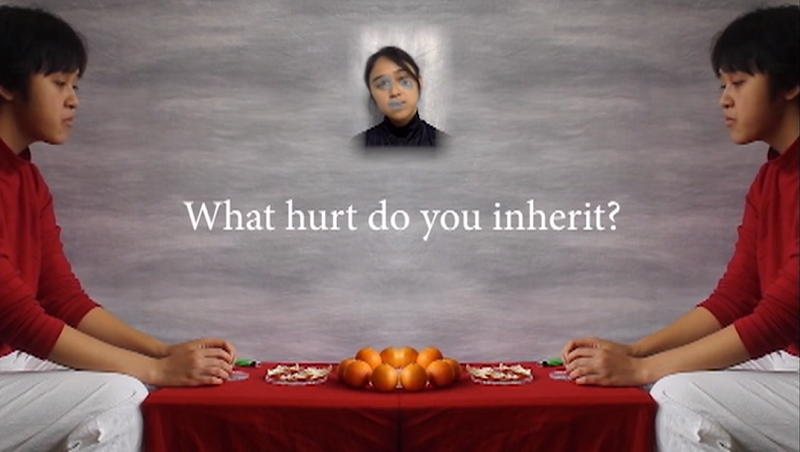
Betty Nguyễn art defies easy categorization. In part, it’s because she works in multiple mediums—from painting to photography, and even video and sound art. Whatever form she inhabits, her creations are both lively and challenging with an almost electric emotional undercurrent. diaCRITICS had a chance to talk with Nguyễn about her art, her artistic praxis, and her aesthetic influences.
Artist Statement:
When I was painfully bound to my room after a hip surgery, I decided to convert my body to a studio. The mental act of doing so gave me the power to create anything, anywhere, no matter how unpleasant my circumstance and without needing to pay studio rent or art school fees. In my work, I search for new frames and connections.
Homemakers curate galleries of daily life, butchers sculpt raw, organic material, and janitors paint floor canvases with mops. This isn’t to justify underpaid and under-respected work through romanticization. This is to point out how we are able to romanticize and justify formal art people, methods, and institutions without question. In my artist practice, I channel that (more than often undeserved) worship into celebration for the unrefined life work of those close to us. Many of us do not have a choice but to do soul-draining work, but until and as we finally change that, I am all for getting some creative self-recognition out of it.
At the club, you dance even as you leave. My art is sentimental and spiritually sweaty.
You work in different mediums including video (and, in a sense, performance), sound, photography, and painting. How do you decide what medium to use? What draws you these different forms of art?
By constantly shifting mediums and forms, I reenact an ancestral cycle of displacement and relocation. The force that draws me to explore different mediums is the same force that exiles me from each one. I struggle with keeping still, in mental, emotional, and physical realms. Though my inability to focus is usually considered a defect in most areas of proper society (school, work, etc.), I can proudly succumb to it in my creative practice. As a community-rooted artist, I enjoy the process of learning new methods of expression and increasing the ways I may connect with others who embody different ways of existence and communication.
That said, I also lose many of my pens and end up using whatever is around and most convenient for me. Working with what I have is the materially decisive factor of which medium I choose to use.
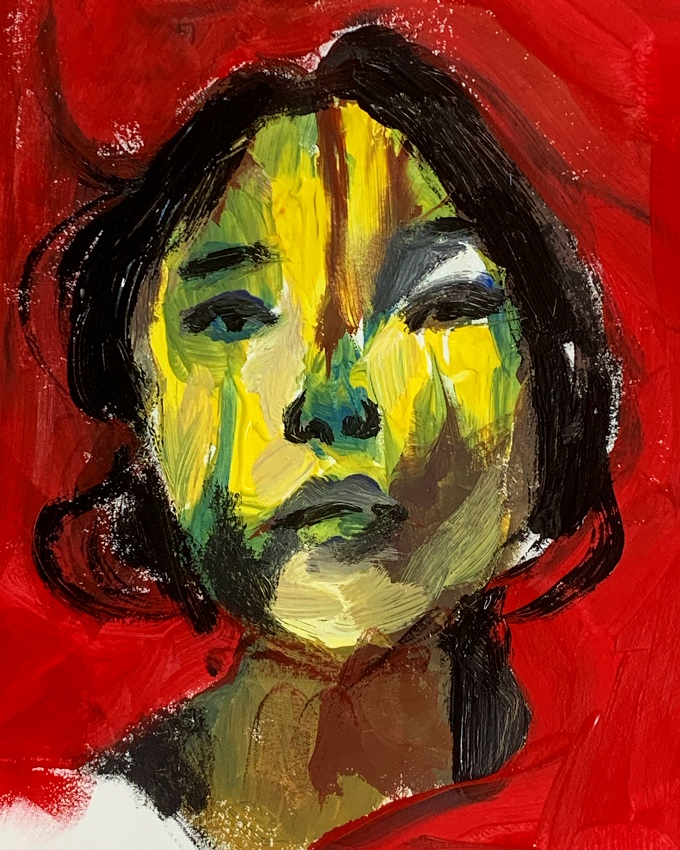
Can you walk us through the process of creating a piece of art? Is it more of a planned process or do you go more with intuition?
I am not a very calculative person. I do not want to want power and control. I do not even pack my luggage until the day before a trip. In my artistic practice, I usually only have an initial cloud of an idea or a feeling before I start. As I work on the piece, I will discover new urges and possibilities and improvise personally interesting ways to express them. By personally interesting, I mean that I combine old techniques that I know by muscle memory with new visions that I have not tried before. I also need to constantly and actively transform my destructive urge to scrap the piece into a patient experimentation with parts that I am unhappy with. I become quickly bored and end up switching styles, patterns, mediums, etc. multiple times in one piece. I guess my process is temperamentally and temporally erratic. The actual physical painting of my “Pouring” piece was completed in 10 minutes. However, the energy behind it culminated from weeks of dealing with losing my job, going through a breakup, moving all of my belongings back to my hometown, and fighting a flea infestation upon arrival, which led me to whipping out the painting in a sweaty, insecticide-covered frenzy.
I am interested in the creation that occurs unintentionally. There are themes and topics that tint the back of my mind all of the time. When I start on a new piece, they leak out and crystallize. Without explicitly thinking about Art and Concepts, by existing and experiencing life happenings, we passively gather material and shape our personal style. The active step is to acknowledge our life experiences as beautiful and artistic and worthy of documentation.
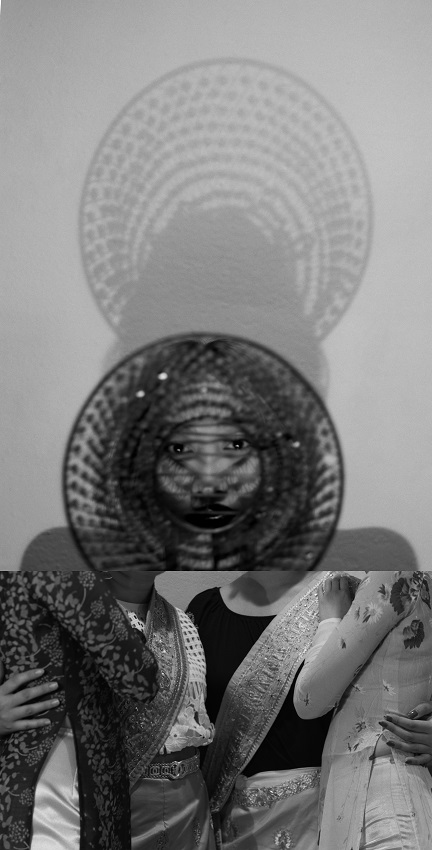
You play a lot with shadow and reflection in your work. How do you see shadow and reflection working in your art?
Direct communication constantly turmoils me. I think I am supposed to want to be someone who clearly speaks her mind. Straightforward, straight to the point, straight shooter, all that good(?) stuff. But in actuality, my mind is a foggy, curly mess! I think pretending to condense a whole ecosystem of ideas into one truth could be even more deceptive than lying. I do not believe in the ability of just one sentence, outline, figure, or subject to capture the layers of a feeling—I do not really believe in capturing in general.
The other morning, as I was reaching for a box of tea, my dad asked me if I was going to have coffee. I pointed at the tea box and said, no, I am making tea (as it is easier to make during a lazy morning). He replied, “I know, but do you want to have coffee?” and pointed to a cup that he already took the time to make. He realized what I had actually wanted without, or despite, hearing my literal words. While I was not lying, there was a quiet understanding of the truth at the edges of my words.
Underbellies are beautiful. I am drawn to shadows and reflections because they decenter the dominant subject, the main message, and instead reveal the margins of a substance.
That said, I still do want to be better at concisely understanding and communicating my internal world. Through my art, I get to not feel ashamed in the learning process.
“Chewing Home” by Betty Nguyễn: “I recorded my side of the phone conversations with loved ones back home when I spent a few months in Asia and cut and combined limbs of different conversations. My conversation with my mother would only consists of mm’s and ahh’s.”
How would you describe your aesthetics?
As a child, I was secretly infatuated with grotesque viscera and bugs. From the library I would borrow books on centipedes and leeches. There is something deep within me that is perpetually, inherently uncomfortable. The aesthetics that appeal to me are ones that are able to evoke the same feeling, bringing unity between my internal and external, mind and body realities.
My formal training in biology definitely shapes the visual aesthetics of my work. I lift textures, shapes, and patterns from the natural phenomena that surround me. While I try to distort the faces and bodies of human subjects to mimic qualities of vines, insects, rock surfaces, and creeks, at the same time, I try to inject very human elements such as anxiety and amusement into inanimate objects such as orchids and chairs.
On a superficial level, I like to overuse the color red and play with framing. My first role as a professional artist was when I discovered the internet, pretended to be much older than I was, and created pixel art of mythical creatures for an online game. I credit most of my knowledge of illustration, color theory, and composition to the humble pixel.
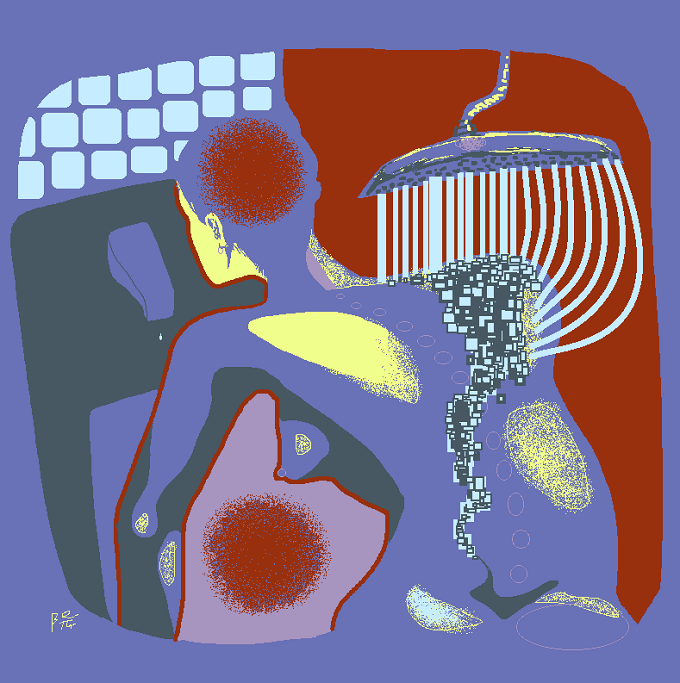
What other artists have influenced your own work? What other artists and works do you see your artwork in dialogue with, if any?
I attribute most of my ability to create to my parents’ DIY spirit. Here are small bios that I have written for them:
Minh is a homemaker who specializes in both indoor and outdoor direction of art. On the side, she is an acclaimed singer and singing coach whose tragic folk tunes can be heard from an obscure Chinese social media app. An experimental artist out of circumstance, she repurposes affordable objects to echo luxurious, high-end designs, and is the ghost-author of many of her children’s school previous projects. Recently, she has been drilling holes into found objects to makeshift planters for horticultural arrangements.
Chuong is an HVAC (heating, ventilation, and air conditioning) technician whose large-scale, intricate ductwork installations can be found both at multiple public institutions such as city halls, libraries, and recreational centers. Smaller AC commissions can be found at the homes of individual collectors, including many of our neighbors. Though his formal training lies in HVAC, he is self-taught in multiple sculptural disciplines including plumbing, electricity, roofing, flooring.
In addition to those two individuals, I have collaborated with two organizations that continue to inspire me with their embodiment of community-rooted artist liberation: Cocoroom in the Kamagasaki neighborhood of Osaka and 3F Gallery in San Jose. Please check them out.
“Workbench” by Betty Nguyễn: “In ‘Workbench,’ I hope to have a self-reflective meal where I interface with multiple generations by peeling apart a mandarin orange, arranging the peels into the shape of a chrysanthemum, and sharing a meal with my passed grandfather, whom I embody. I hope to gain something from our collective memory and knowledge through this experience.”
With “Workbench,” you’ve said you hoped “to gain something from our collective memory and knowledge through this experience.” What role does collective memory and knowledge play in your art?
One time when I was squatting to weed the garden (you know the pose), I noticed a single moment of connection, on a genetic, chemical, anatomical, and spiritual level, of my bones and that of my late grandma. My bones aligned above that of hers, our two bodies overlaid in different planes of existence. I wondered about all of the labor and creation that she has brought forth in that squatting stance.
Many of our actions are learned through mirror neurons and observational learning. So despite being separated by the ocean and minimally interacting with my grandparents and the ancestors that preceded them, I think about how many of my parents’ mannerisms have mirrored theirs and notice how many of mine mirror those of my parents’, which leaves us in a funky trick mirror house where our individual bodies are slightly distorted but our inherent connection is shown as the figures move together. Once I layer in the mirror homes of my community kin and their lineages into this image, we find ourselves suspended inside a massive disco ball, surrounded in all directions with infinite mirror tiles and synchronized bodies.
In the disco ball, beginnings and endings cannot be distinguished. Collective memory and knowledge allows me to abandon linear ways of thinking and being. When I move a pencil, I feel my arm being steadied and guided by the movements of my community’s ancestors while simultaneously feeling like I am bringing my people to somewhere they have never been before. Sometimes, we navigate together.
Conversation seems integral to your work. We can see this especially in “Chewing Home.” What kind of conversations do you hope viewers will have with your work? What do you want to provoke in viewers of your art?
When someone consumes my art, I hope they feel bearable discomfort, like a slight internal itching. I hope that parts of them that are actively or subconsciously smothered as a result of shame or practicality may resurface, bringing a catharsis of mutual recognition.
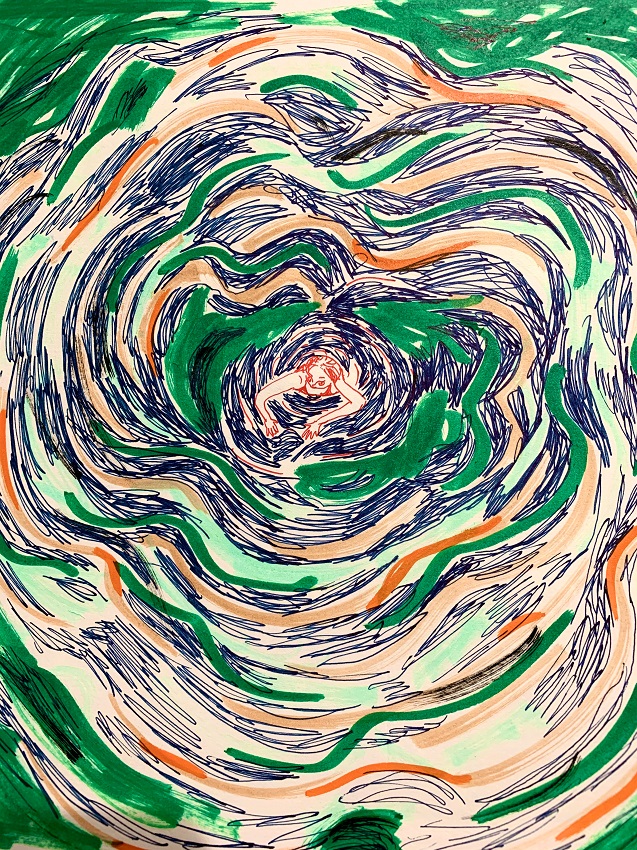
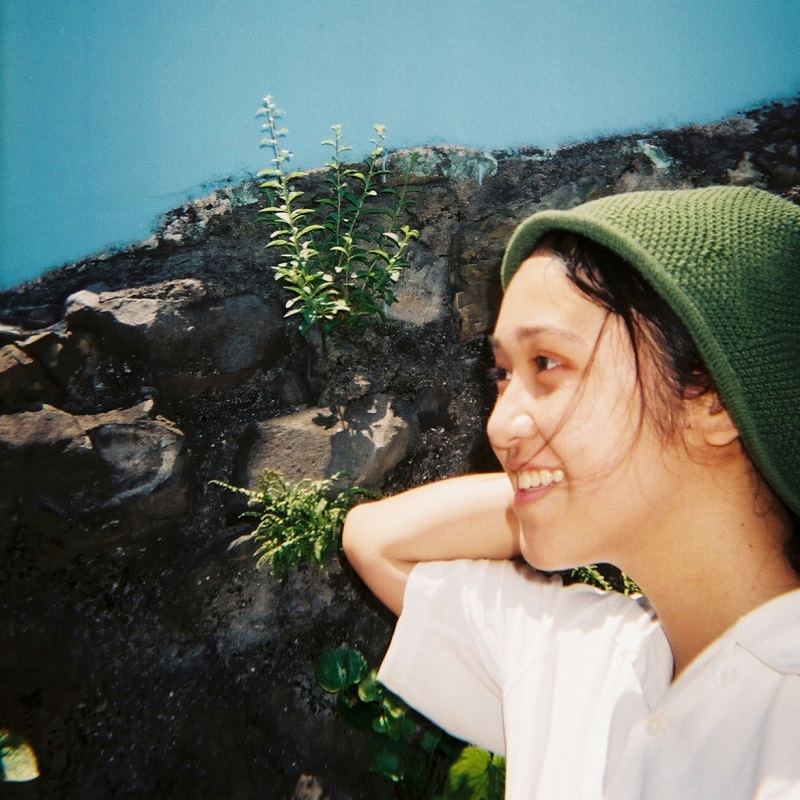
Betty Nguyễn is a nervous artist from Southeast San Jose who experiments with the mediums available to her. She graduated from Stanford University with a B.S. in Biology and dreams of invertebrates, mosaic kneecaps, and pipes connecting bodies of water. She is receiving her M.A. from the University of Florida’s Center for Arts in Medicine, where she aims to creative wellness to contort ideas of cure and (dis)ability in working class communities of color. More of her work can be found at https://bettynguyen.studio.design/ and at @dacbeetjuice on Instagram.
Contributor Bio
Eric Nguyen is the Reviews Editor for diaCRITICS.



Thank you for this profound interview. Betty Nguyen is not only a ‘nervous artist’ but a philosopher. He art and her thinking do bring me ‘bearable discomfort’ (what a lovely notiont!) and I will re-read the interview to get more out of it.